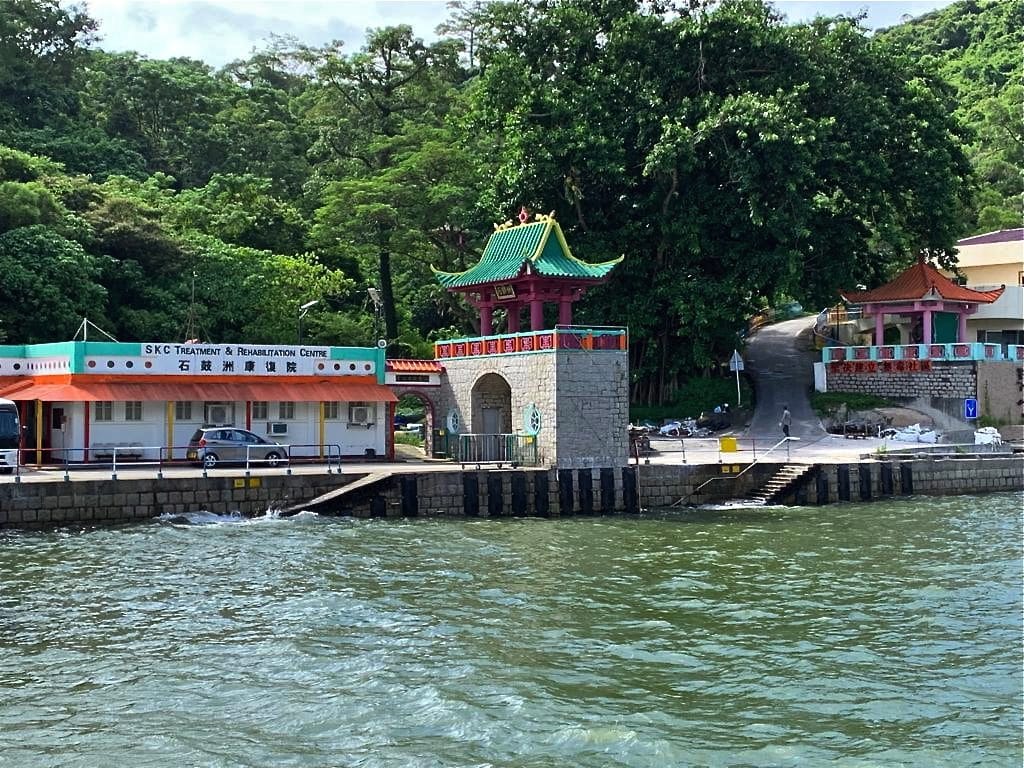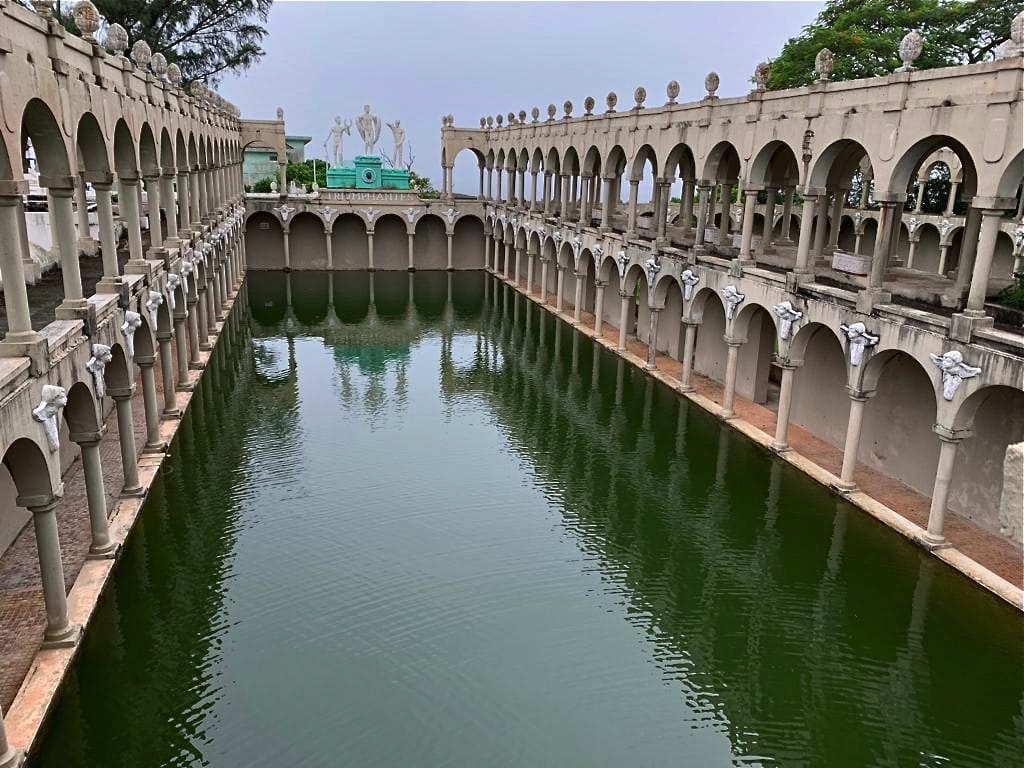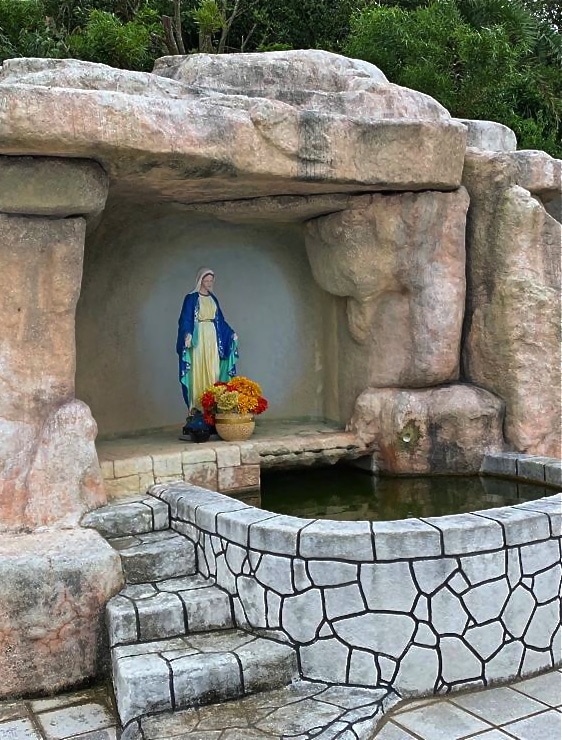

Shek Kwu Chau is a name not so familiar for Hong Kongers. Once known as Coffin Island, it is a tiny island with measures 1.5km by 1.2km in size that faces the bustling Cheung Chau Island and Chi Ma Wan peninsula. The island remained uninhabited until 1960s. In 1962 the Society for the Aid and Rehabilitation of Drug Abusers (SARDA) obtained permissions to build a treatment and rehabilitation facility for the drug dependents.
Today the island has over a dozen of residential buildings, a hospital block and administrative buildings connected through a network of winding roads on this hilly terrain. The ferry pier is the common access port for the inmates and visitors, but access to the island is reserved for those with special permit.
According to Cheung Chung Tai, the superintendent of the centre, the island is home to around 170 male drug dependents most of whom voluntarily approach the centre for treatment and rehabilitation. Over 50 staff members of the society coordinate the activities in the island.
The society does not endorse any particular religion, but provides the inmates with possibilities to practice their faith. There is a Buddhist shrine, several Chinese temples and a Catholic chapel. Holy Family Chapel situated in the middle of lush green woods on the hill side is a common place of worship for various Christian denominations. Small, yet beautiful chapel was blessed in 2008 by then auxiliary bishop John Tong Hon. It has a grotto of Our Lady and a round bell tower facing the sea.

trained to do stonecraft projects.
Many years ago Catholic priests, nuns and parishioners from Cheung Chau used to visit the centre to pray and spend time with the inmates and to teach them music. Salesian Father Silvio Lomazzi was an Italian priest who persevered a personal apostolate among the drug addicts in Hong Kong. He spent over 47 years of his life in Hong Kong and visited the Shek Kwu Chau Island frequently until a drug addict under treatment strangled him to death on 29 December 1982.
Shek Kwu Chau Island honoured him with a five-metres tall monument with a statue of Our Lady on the top, erected in loving memory of Father Lomazzi. The monument is situated in front of the administrative block of the centre.
John Ko, the Deputy Superintendent of the centre realises the need for support from various religious communities in the process of helping the drug dependents. There is a sister from St. Paul’s de Charters who visits the centre to conduct prayers and talk to the inmates. Ko hopes to have more frequent visits by priests and Church groups to celebrate Mass and organise prayer services in the island.
Although not open to the public, the island had luminaries visiting the place. Princess Diana had twice visited the centre and one of the blocks is named after her. The art, architecture and sculptures from both Chinese and western cultures provide glimpses into the artistic and stone-masonry skills of the inmates who had come to the island for treatment in the past. Replica of ancient Roman baths and loan-ball court, artificial lively marble sculptures, fountains and lily ponds of the West find a place in the scenic hillsides of the island.

Anyone admitted to the centre goes through an intensive two-week detoxification process in the hospital block in the island. According to Effy Wong, the nursing officer of the hospital there are two categories of patients in the centre. The first is opiate cases – referring the cases of opium and heroin addiction. This group forms the majority of the inmates here. The second group is psychotropic substance abuse (PSA) cases – referring to addiction problems with crystal meth (known as Ice) or ketamine. Some of the cases are severe that requires isolation and special monitoring of the patient.
Wong is the first female nursing officer of the hospital in the 57 years of its existence. She realises this as a tough job to handle. But for her, it is more than a job. She puts up a strong face while dealing with the inmates but grows empathetic when talking about their conditions. Many patients return to the centre for their second or third round of treatment because once they are out of the rehabilitation facility, most of them do not have a home to return nor a steady job to live on.
Although there are a few cases of court referrals, most of the patients come to the centre voluntarily and all the services are totally free. And the inmates are free to leave the island any time they prefer to do so.
If they opt to stay in the island, they should abide by the regulations of the centre, which include taking up the assigned tasks such as cooking, doing the laundry, maintaining the whole island neat and tidy, taking care of its gardens and livestock. In addition to the inmates and staff, the island is also home for peacocks, parrots and many more exotic birds, turtles and sheep.
Drug related crimes are on the rise in Hong Kong. According to the Oblate Father John Wotherspoon who runs a campaign against drug trafficking to save people from going to prisons, there are a lot of International drug peddlers languishing their lives in Hong Kong prisons.
Efforts of SARDA and Father Wotherspoon and numerous other organisations and people are gentle reminder of our social responsibility to contribute to solve the problem of drugs from the society. SE










